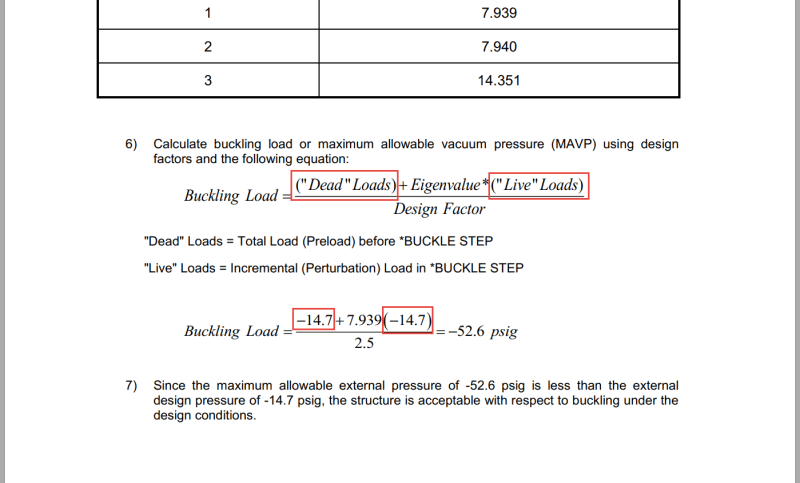Sajjad2164
Mechanical
Hello, guys!
I have a question about buckling analysis in ASME SEC VIII DIV.2 5.4 (PROTECTION AGAINST COLLAPSE FROM BUCKLING). The mentioned article says that the load combinations should be applied as per Table 5.3. I studied the example in ASME Section VIII - Division 2 Example Problem Manual (PTB), in which there is only one load case (external pressure) and no load combination. In this example, a final fraction determines the critical buckling pressure, which is appropriate for a single load. Now, how should we calculate the critical buckling load if we have a load combination?
Can I use the fraction like this?

Why has PTB substituted the external pressure instead of the dead load in the following fraction?

I have a question about buckling analysis in ASME SEC VIII DIV.2 5.4 (PROTECTION AGAINST COLLAPSE FROM BUCKLING). The mentioned article says that the load combinations should be applied as per Table 5.3. I studied the example in ASME Section VIII - Division 2 Example Problem Manual (PTB), in which there is only one load case (external pressure) and no load combination. In this example, a final fraction determines the critical buckling pressure, which is appropriate for a single load. Now, how should we calculate the critical buckling load if we have a load combination?
Can I use the fraction like this?

Why has PTB substituted the external pressure instead of the dead load in the following fraction?

